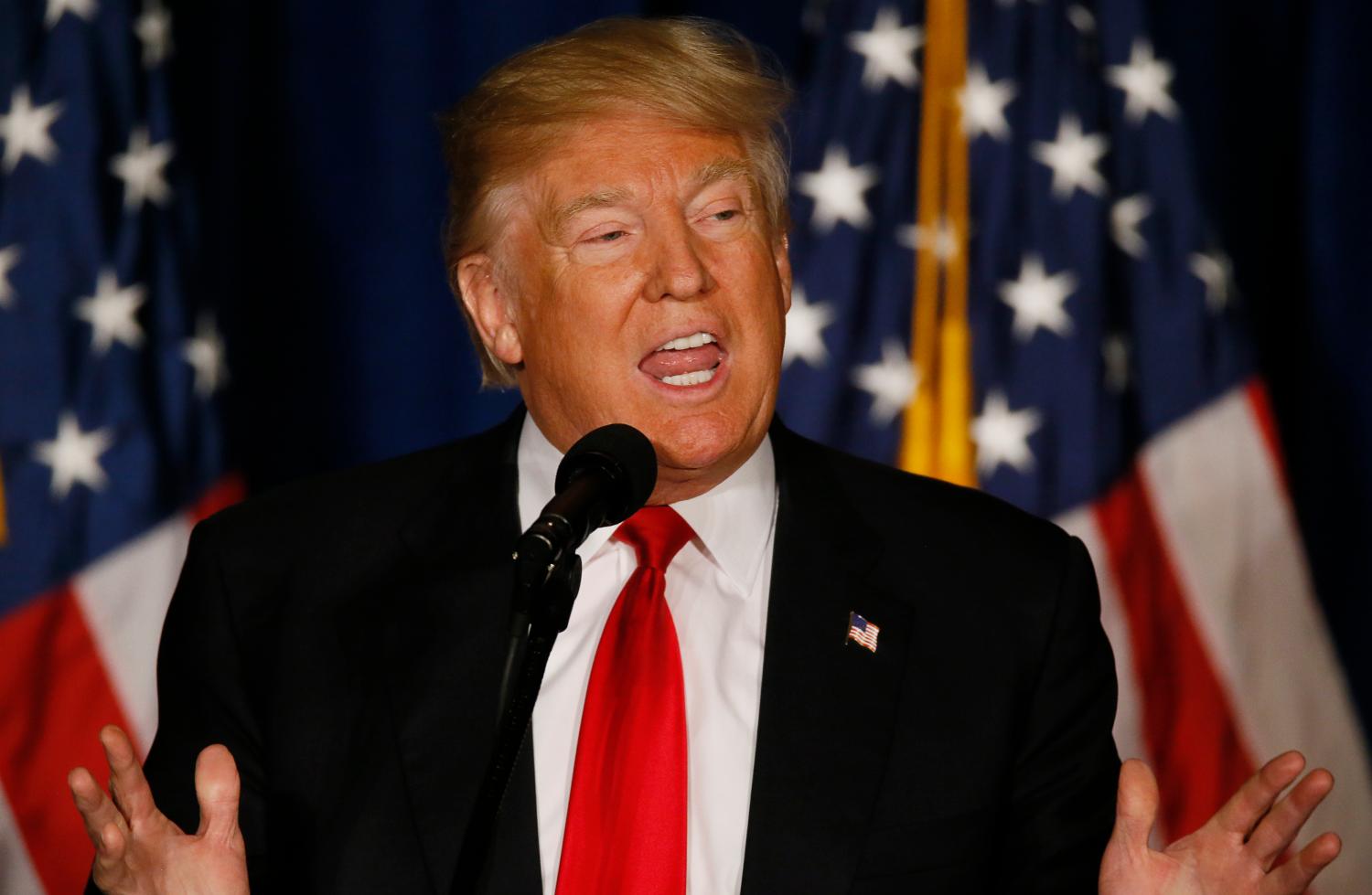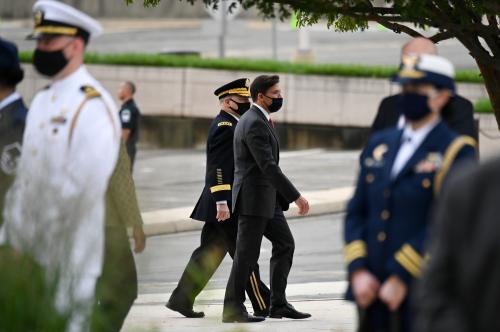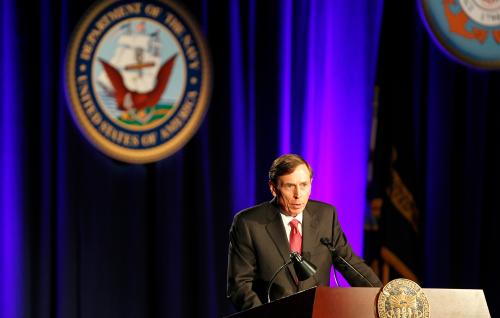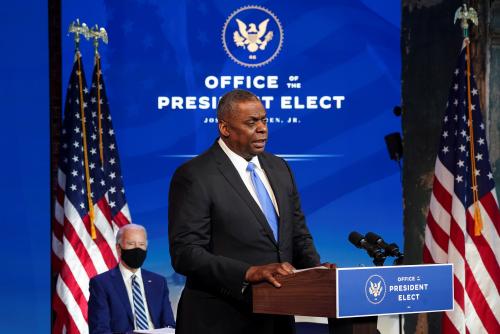In the course of 2016, Donald Trump has made a number of provocative comments about recent U.S. military strategy, and also about the related matter of the quality of military advice given by recent top military leaders to President Obama. Most recently, as with the September 7 NBC forum on national security policy, he stated that Obama “reduced to rubble” his generals—implying that Obama had not only ignored their advice, but essentially emasculated their ability to provide it robustly and honestly. What are we to make of these claims?
Getting a few things out of the way
First, some of Trump’s comments can be quickly dismissed. His critiques of recent leaders are badly misguided, when one considers the extremely high regard with which leaders like Dave Petraeus, Stan McChrystal, and John Allen are held. Obama did not create those leaders, of course, but he did work with them, and he appointed some of them to their biggest jobs.
And Trump’s claim that he cannot describe his anti-ISIS strategy now, but will commission his own team of military advisers to come up with one within 30 days of inauguration, is a punt. I know some of those Trump advisors, and some are indeed talented—but they were also often part of previous attempts to find the golden bullet against ISIS. Through no fault of their own, such a strategy has proven elusive, and will continue to prove elusive.
I also think that Hillary Clinton is right when she says that Trump’s anti-Muslim rhetoric will set us back in the broader effort against Islamist extremism, by antagonizing key allies in the broader Islamic world and by providing fodder that ISIS and al-Qaida can use in recruiting efforts (full disclosure: I am a minor advisor to Clinton’s campaign).
Obama and the top brass
But let us return to the concept of “reducing to rubble” the generals (and presumably also the admirals, like former Chairman of the Joint Chiefs Mike Mullen and former NATO Supreme Allied Commander James Stavridis, not to mention Admiral Harry Harris who now leads Pacific Command). Here, Trump is again wrong—but at least the subject deserves a bit more discussion.
First, Obama has dismissed some top leaders. In one way or another, not only General Petraeus and General McChrystal, but also General James Mattis and General Michael Flynn, either were asked to resign or had command tours ended earlier than might have been expected. The latter is not nearly as big a deal as the former, of course. In regard to the resignations and/or firings, my own view is that both Petraeus and McChrystal could have been kept in command after their respective mishaps. But in rebuttal to Trump, I am in the distinct minority in this view among virtually any group I’ve conversed with or read on the subject—Democrat or Republican, Obama supporter or not, admirers of Petraeus and McChrystal or not (there are of course far more admirers than critics of these fine Americans, but both categories do exist).
Thus, if Trump meant that Obama has been oppressive in how he has handled military command decisions, he is wrong. There is no pattern here that is either particularly egregious or particularly unusual. Recall, for example, that President George W. Bush chose not to renew General Peter Pace’s tenure as chairman of the joint chiefs, dismissed an Air Force chief of staff, fired a commander of Central Command, and promoted David Petraeus to lead the surge in Iraq when other generals might have seemed closer to deserving their turn, in terms of seniority.
[I]f Trump meant that Obama has been oppressive in how he has handled military command decisions, he is wrong.
Was he listening?
Then there is the matter of whether military advice has been proper and professionally received by this president. Again, there is grist for debate. Some of the big decisions on Obama’s watch concerned when to leave Iraq, whether and how much and for how long to surge troops in Afghanistan, how to push back against Russia and China, how to handle the Libyan and Syrian civil wars, how large to keep the U.S. defense budget, and of course whether to attack Osama bin Laden with commandos or aircraft, once he was located, back in 2011. It is of course impossible to have a full discussion of each of these issues in a brief space. But having studied and debated each of them over the years, I would simply offer these quick observations:
- President Obama probably did pull U.S. troops out of Iraq faster than most of his top military leaders wanted, and I think it was a mistake to leave that country back in 2011. But this is exactly the kind of big-picture decision presidents are paid to make, and Obama had campaigned for president promising to make just that decision back in 2007 and 2008. Moreover, he did slow down the withdrawal from Iraq relative to campaign promises, taking some 36 months to leave rather than the 16 or so originally indicated, partly because his generals thought that slower drawdown more prudent.
- Obama made the surge in Afghanistan smaller than many—though not all—military advisers preferred, and he ended it sooner than many would have liked. But he still tripled U.S. forces in that war after a decade during which few, if any, military advisors were calling for such a buildup. And many of us who supported that Afghanistan surge have had to concede that it didn’t work out quite as well as hoped. I think Obama has too often given Afghans, Pakistanis, and the Taliban the impression that America was soon to leave the region again, as it has in the past—but we have not left, and on balance Obama has been quite resolute. He heeded much of the military advice given him on the subject (which, again, was not unanimous by any means).
- On the defense budget, Obama has easily outspent Reagan over their respective eight-year presidencies (even in inflation-adjusted dollars). The Budget Control Act and sequestration proved to be mistakes, but they were bipartisan mistakes that the Tea Party revolution of 2010 did more to catalyze than anyone or anything else. Moreover, defense spending did need to be reduced somewhat from late Bush and early Obama levels, as the wars gradually wound down and the nation’s fiscal deficit remained high.

- On Russia and China, Obama has made some mistakes. But he has sought and generally found a good balance between pushing back against their regional ambitions while at the same time avoiding dangerous escalation. I think he has in fact done quite well, generally working closely with Pacific Command and European Command in the process.
- On Syria and Libya, I think the president’s critics have been generally correct and Mr. Obama has for the most part failed. But these have been very messy, tough conflicts to influence, and most agree there were no easy instruments of American power to apply—especially since the option of a large invasion was rightly taken off the table in regard to both.
Thus, on the big-picture national security decisions of the day, Obama has generally been fairly good despite some specific and important failures in the Middle East. He has for the most part worked closely with military leadership, and took much of their advice on matters such as the surge in Afghanistan and the bin Laden raid. He has also correctly understood that with his job comes responsibility for the biggest decisions of strategy, and he has had the confidence to make those decisions himself (even in those cases where he might have gotten the decision wrong).
Trump has raised an issue that is interesting and important at one level, and where there is plenty of fodder for debating the specifics of the Obama record. But there is no serious case for claiming so sweepingly that Obama has reduced to rubble the top military leadership of the United States.
Rachel Slattery created the graph for this post.
The Brookings Institution is committed to quality, independence, and impact.
We are supported by a diverse array of funders. In line with our values and policies, each Brookings publication represents the sole views of its author(s).









Commentary
Trump and the generals
September 14, 2016